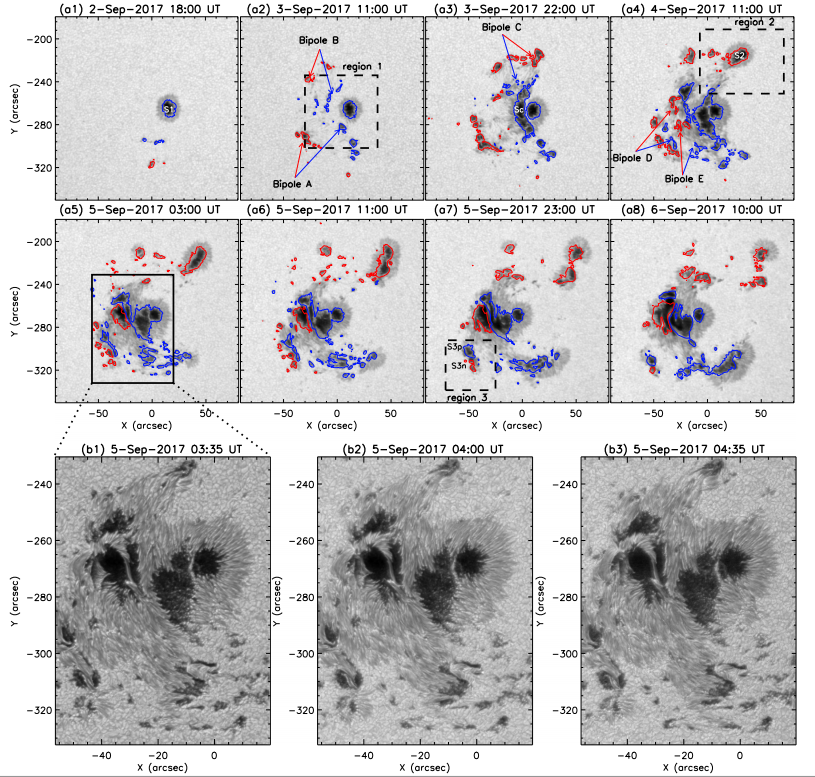
Sunspot is the best object to study magnetohydrostatic equilibrium, and the research on the evolution of sunspots can help to understand the relationship between sunspot and other solar activity phenomena, which is of great significance to the exploration and prediction of solar activity.
The evolution process of sunspot’s penumbra in active region NOAA 12673 has been studied in detail by using the data that observed by the new vacuum meter telescope (NVST) and Helioseismic and Magnetic Imager (HMI) onboard the Solar Dynamic Observatory (SDO).
In a study recently published in The Astrophysical Journal, Dr. LI Qiaoling, Prof. YAN Xiaoli and the collaborators from Fuxian lake solar observatory of Yunnan Observatories of the Chinese Academy of Sciences analyzed the formation and decay process of sunspot penumbra in the active region NOAA 12673.
Through the analysis of the sunspot magnetic field during the evolution of penumbra, the researchers found that the mean longitudinal magnetic strength of penumbra decreased and its mean transverse magnetic strength increased with the increasing penumbral area during the formation of sunspots.
However, during the decay of sunspots, they found that the mean longitudinal magnetic strength in the penumbra increased, and the mean transverse magnetic strength in the penumbra decreased with decreasing penumbral area. The newly emerging magnetosphere tube is suppressed and converges by the existing magnetic field to form the sunspot penumbra, and the change of the penumbral magnetic field from horizontal to vertical cause the disappearance of the sunspot penumbra.
Besides, through the analysis of the velocity field of sunspot penumbra, they found that moat flow around the periphery of sunspot gradually formed during the formation of the sunspot penumbra. In the process of penumbral decay, the velocity of moat flow near the region of magnetic emergence gradually decreased and disappeared first.
Furthermore, the researchers found that the lifetime of the sunspot is obviously shorter than that a typical mature sunspot when solar flares occurred near the sunspot. Therefore, they drew a conclusion that the change of the surrounding magnetic field environment around the sunspot may affect the sunspot lifetime.
These results are very important for understanding the evolution of sunspots and solar dynamo. In the future, the researchers plan to analyze more examples to address this issue by using high-resolution observations from the New Vacuum Solar Telescope (NVST) and other instruments.

Figure: High-resolution TiO images observed by the NVST and Continuum intensity images observed by SDO /HMI showing the sunspot evolution of Active Region NOAA 12673. (Image by LI Qiaoling)

86-10-68597521 (day)
86-10-68597289 (night)

52 Sanlihe Rd., Xicheng District,
Beijing, China (100864)

